Archive Record
Images

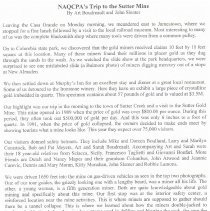
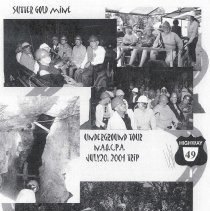
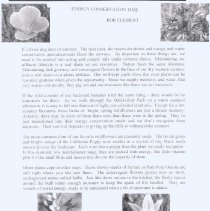
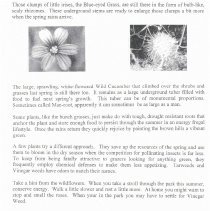
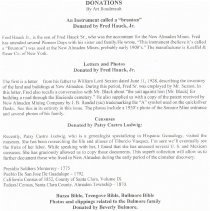
Additional Images [15]
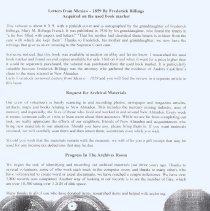
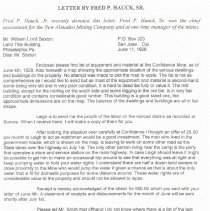
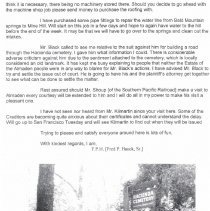
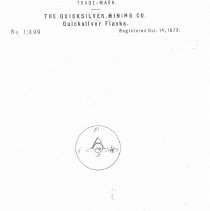
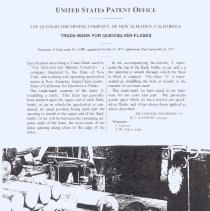
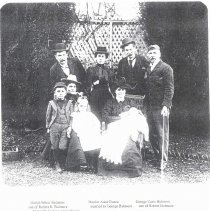
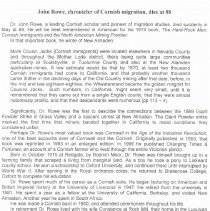
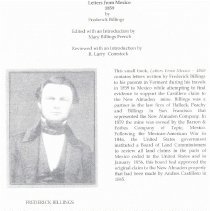
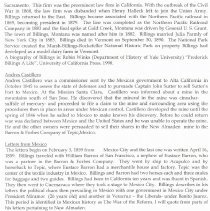
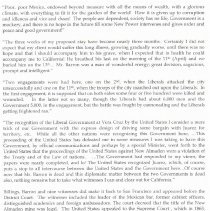

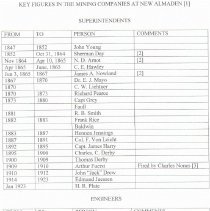
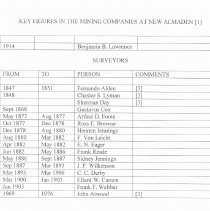
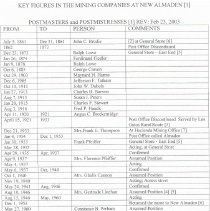
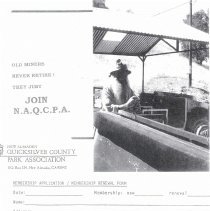
Metadata
Catalog number |
1997.2.2648 |
Object Name |
Newsletter |
Date |
2004 |
Description |
TITLE: Quicksilver County Park News Newsletter of the New Almaden Quicksilver County Park Association PUBLISHER: NAQCPA Newsletter of the New Almaden Quicksilver County Park Association SUMMER 2004 ISSUE 76 PRESIDENT'S MESSAGE Our Adopt a Trail Program is succeeding nicely. Members of NAQCPA have worked hard on the Deep Gulch Trail and have now adopted the Yellow Kid Trail and the Catherine Trail. Work on these trails is done the second and fourth Wednesdays of every month. The Blacksmith Shop is looking fantastic. David Miller, a volunteer, has been building a floor for all of the blacksmith equipment so that it will be level. We will be calling for help to put the artifacts of the blacksmithy in the building for a nice public display. An Eagle Scout, Tolly Powell, has organized a group of scouts and their parents to work on the garden in front of the Blacksmith Shop. They have graded the land , dug a water line and prepared for an oak tree. All will be ready for our fantastic Pioneer Day. Please save October 9, 2004 for our dedication of the Blacksmith Shop and the 150th Anniversary of the Casa Grande. You will be receiving a special invitation. Kitty (408) 268- 6541 NAQCPA's Trip to the Sutter Mine By Art Boudreault and John Slenter Leaving the Casa Grande on Monday morning, we meandered east to Jamestown, where we stopped for a fine lunch followed by a visit to the local railroad museum. Most interesting to many of us was the complete blacksmith shop where many tools were driven from a common pulley. On to Columbia state park, we discovered that the gold miners received claims 10 feet by 10 feet square at this location. Many of these miners found their millions in placer gold as they dug through the sands in the wash. As we watched the slide show at the park headquarters, we were surprised to see one mislabeled slide (a Bulmore photo) of miners digging mercury out of a stope at New Almaden. We then settled down at Murphy's Inn for an excellent stay and dinner at a great local restaurant. Some of us detoured to the Ironstone winery. Here they have on exhibit a large piece of crystalline gold imbedded in quartz. This specimen contains about 57 pounds of gold and is valued at $3.5M. Our highlight was our trip in the morning to the town of Sutter Creek and a visit to the Sutter Gold Mine. This mine opened in 1989 when the price of gold was over $800.00 per ounce. During this period, they often took out $500,000 of gold per day. And this was only 6 inches to a foot of quartz. In 1991, when the price of gold collapsed, the owners decided to make ends meet by showing tourists what a mine looks like. This year they expect over 75,000 visitors. Our visitors donned safety helmets. They include Mike and Doreen Boulland, Larry and Marilyn Comstock, Bob and Pat Meyer, Art and Sarah Boudreault. Accompanying Art and Sarah were their 18 year-old relatives from Sciacca, Sicily, Francesco Taglietti and Giovanni Bonfari. More friends are Dutch and Nancy Mapes and their grandson Columbus, John Atwood and Jeannie Carevic, Dennis and Mary Moran, Kitty Monahan, John Slenter and Robbie Lamons. We were driven 1650 feet into the mine on gas-driven vehicles as seen in the top two photographs. One of our tour guides, the grizzly looking one with a lengthy beard, was a miner all his life. The other, a young woman, is a fifth generation miner. Both are quite knowledgeable about gold mining and specifically about this mine. Our first stop was at the interior safety center, a reinforced location near the mine activities. This is where miners are supposed to gather should there be a tunnel collapse. This is where we learned about how the miners double-jacked to produce the blasting holes, the circular patterns used in drilling and blasting the rock, the care the miners used in handling both black powder and dynamite, the composition of quartz and the surrounding soil, the use of canaries as indicators of oxygen levels and how gold migrated into quartz. Then we climbed through several drifts to see exactly where the gold-bearing quartz is. We saw specific drilling tools (pictured). Of particular interest was the use of wooden timbers to keep the walls from collapsing into themselves. Following this tour, we went to town, ate lunch and bought souvenirs. Kitty found a pump that is now installed next to the blacksmith shop. Now we are dreaming of where our next trip will be. It's those dog days of summer. The heat rises, the reservoirs shrink and energy and water conservation announcements flood the airways. As important as these things are, we need to be pushed into acting and comply only under extreme duress. Maintaining our affluent lifestyle is a real drain on our resources. Nature faces the same dilemma. Maintaining. lush greenery and extravagant flowers in the face of our dry western summer puts a real strain on a plants abilities. Our well-kept yards show that even plants can be resource gluttons when given the opportunity. Since we supply nutrients, and water_ that very scarce commodity _ they pig-out and use resources like there was no tomorrow. If- the wild cousins of our backyard beauties tried the same thing - there would be no TOMOrrow for them. As we walk through the Quicksilver Park on a warm summer afternoon. it is easy to fall into that out-of-sight, out-of-mind syndrome. Except for a few summer bloomers, those fields of bright,. spring wildflowers are just a distant memory . Actually, there may be more of them there now than there were in the spring. They've just transitioned into their energy conservation mode and we don't recognize them anymore. Their survival depends on giving up the frills to withstand the summer. The most common form of our favorite wildflowers are presently seeds. The lavish green and bright orange of the California Poppy now resides in a myriad of tiny black seeds strewn all over the landscape. Each is no less a poppy than the plant we easily recognize. In this dormant, low maintenance stage, they are packed with energy, like little vitamin pills for the small birds and insects that devour the majority of them. Other plants cope in other ways. Those showy stands of Serrate or Pom Pom. Onions are still right where you last saw them. The extravagant flowers persist now as short, underground sterns, called bulbs. Just like those onions in the kitchen. the fleshy leaves around the bulb retain enough moisture to keep the spark of life kindled. They are vessels of stored energy, ready to be unleashed when a bit of rainwater is added. Corms, bulbs with dry protective leaves around them to seal in moisture, are there in vast numbers to represent the Blue Dicks and lthuriel's Spears that reside in our memories. Those clumps of little irises, the Blue-eyed Grass, are still there in the form of bulb-like, scaly rhizomes. These underground sterns are ready to enlarge those clumps a bit more when the spring rains arrive. The large, sprawling, white-flowered Wild Cucumber that climbed over the shrubs and grasses last spring is still there too. It remains as a large underground tuber filled with food to fuel next spring's growth. This tuber can be of monumental proportions. Sometimes called Man-root, apparently it can sometimes be as large as a man. Some plants, like the bunch grasses, just make do with tough, drought resistant roots that anchor the plant and store enough food to persist through the summer in an energy frugal lifestyle. Once the rains return they quickly rejoice by painting the brown hills a vibrant Green. A few plants try a different approach.. They save up the resources of the spring and use them to bloom in the dry season when the competition for pollinating insects is far less. To keep from being fatally attractive to grazers looking for anything green, they frequently employ chemical defenses to make them less appetizing. Tarweeds and Vinegar weeds have odors to match their names. Take a hint from the wildflowers. When you take a stroll through the park this summer, conserve energy. Walk a little slower and rest a little more. At home you might want to stop and smell the roses. When your in the park you may have to settle for Vinegar Weed. DONATIONS By Art Boudreault An Instrument called a "brunton" Donated by Fred Hauck, Jr. Fred Hauck Jr., is the son of Fred Hauck Sr., who was the accountant for the New Almaden Mines. Fred has attended several Pioneer Days with his sister and family. He wrote, "This instrument (believe it's called a "Brunton") was used at the New Almaden Mines, probably early 1900's." The manufacturer is Keuffel & Esser Co. of New York. Letters and Photos Donated by Fred Hauck, Jr. The first is a letter from his father to William Lord Sexton dated June 11, 1928, describing the inventory of the land and buildings at New Almaden. During this period, Fred Sr. was employed by Mr. Sexton. In this letter, Fred also recalls a conversation with Mr. Black about "the suit against him [Mr. Black] for building a road through the Hacienda cemetery." He also supplied us with a copy of the patent received by New Almaden Mining Company by J. B. Randal (sic) trademarking the "A" symbol used on the quicksilver flasks. See this in its entirety in this issue. The photos include a 1930's photo of the Senator Mine entrance and several photos of his family. Censuses Donated by Patsy Castro Ludwig: Recently, Patsy Castro Ludwig, who is a genealogist specializing in Hispanic Genealogy, visited the museum. She has been researching the life and aliases of Tiburcio Vasquez. I'm sure we'll eventually see the fruits of her labor. While speaking with her, I found that she has amassed several U. S. and Mexican censuses. She has graciously allowed us to copy those documents. This superb collection will allow us to further document those who lived in New Almaden during the early period of the cinnabar discovery. Presidio Soldiers Monterrey - 1775 Pueblo De San Jose De Guadalupe - 1792. California Census of 1852, County of Santa Clara, Volume IX Federal Census, Santa Clara County, Almaden Township - 1870. Buzza Bible, Trengove Bible, Bullmore Bible Photos and clippings related to the Bulmore family Donated by Beverly Bulmore. Beverly Bulmore is the wife of Robert Richard Bulmore, the namesake and great-grandson of Robert Richard Bullmore, mine manager of the New Almaden Quicksilver Mining Company in the 1890's. Beverly explained that Robert R. Bullmore originally spelled his name with two ells, (as did his father) but then changed it to a name with one ell. She came to the museum a few days ago with a box of photos, clipping and artifacts, including very informative family records. Most of the writing in the Bullmore Bible is written by Robert R. Bullmore himself. We are in the process of copying those items that Beverly wants returned and archiving the remainder. This valuable collection includes a listing of eight generations of Bulmores. Marilyn Comstock has offered to type up the 18 pages of family information from the Bullmore Bible for our archives. As we catalog these items, this will create the opportunity to write some more articles that explain the importance of the Bulmores to the development of the mining industry in New Almaden. Letters from Mexico - 1859 By Frederick Billings Acquired on the used book market This volume is about 6 X 9, with a pinkish cover and is autographed by the granddaughter of Frederick Billings, Mary M. Billings French. It was published in 1936 by his granddaughter, who found the letters in "a tin box filled with papers and letters." "That his mother had cherished these letters is evident from the -care with which she kept them". Thanks to Frederick, his mother and granddaughter, we now have the writings that give us inure meaning to the Supreme Court case. Someone noticed that this book was available at auction on eBay and let me know. I researched the used book market and found several copies available for sale. I bid on it and when it went for a price higher than it could be separately purchased, the volume was purchased from the used book market. It is particularly valuable because Frederick Billings was the attorney who gathered the evidence of Andres Castillero's claim to the mine interest in New Almaden. Larry Comstock reviewed Letters from Mexico -- 1859 and you will find the review in a separate article in this issue. Request for Archival Materials Our crew of volunteers is busily scanning in and recording photos, newspaper and magazine articles, artifacts, maps and books relating to New Almaden. This includes the mercury mining industry, uses of mercury and especially, the lives of those who lived and worked in and around New Almaden. Every week it seems, someone calls or visits to learn more about their ancestors. While we are far from completing our task, we really appreciate the efforts of our neighbors, friends of New Almaden and acquaintances who bring new materials to our attention. Should you have any, please bring them in. If you warn materials returned, we will carefully scan them and then return them, sometimes even while you wait. Should you wish that the materials remain with the museum, we will offer you a gift receipt that may be used for any income tax deductions that may be due. Progress In The Archives Room We began the task of identifying and recording our archival materials just three years ago. Thanks to several volunteers, some of who work each week in the computer room, and thanks to many others who have volunteered to create word or excel documents, we have reached a couple milestones, We have over 5,800 records now completed. Another way of looking at our records is to see the number of files, which are over 10,300 using over 3.2GB of disk space. Many thanks to all of you who have donated items, researched items and helped with archiving. An instrument called a "bruntun" Donatcd by Fred Hauck. Jr. LETTER BY FRED P. HAUCK, SR. Fred P. Hauck, Jr. recently donated this letter. Fred P. Hauck, Sr. was the chief accountant for the New Almaden Mining Company and at one time manager of the mines. Mr. William Lord Sexton, P.O. Box 323 Land Title Building, San Jose Cal. Philadelphia Pa. June 11, 1928 Dear Mr. Sexton: Enclosed please find list of equipment and material at the Confidence Mine, as of June 4th, 1928. Also herewith a map showing the approximate location of the various dwellings and buildings on the property. No attempt was made to plot the map to scale. The list is not as comprehensive as I would like to send but as most of the equipment and material is second-hand, some being very old and in very poor condition, it is hard to describe fully or value it. The mill building, except for the roofing on the south side and some lagging in the ore bin, is in very fair condition and contains considerable good lumber. This building is a good sized one, the approximate dimensions are on the map. The balance of the dwellings and buildings are all in fair shape. Leigh is to send me the proofs of the labor on the various claims as recorded at Sonora. When I receive them, I will make a copy of them for you. After looking the situation over carefully at Confidence I thought an offer of 25.00 per month to Leigh to act as watchman would be a good investment. The man who lived in the government house, which is shown on the map, is leaving to work on some other road as the State takes over the highway on July 1st. The only other person living near the camp is the party that operates a store and service station on the main highway. In case Leigh should leave it might be possible to get him to make an occasional trip around to see that everything was all right and keep pumping water to hold your water rights. I understand there are half a dozen land owners in close proximity to the Mine who would jump the water if given a chance as that is about the only water that is fit for domestic purposes for some distance around. These water rights are of considerable value to the property and should not be allowed to lapse. Receipt is hereby acknowledged of the check for 600.00 which you sent with your letter of June 4th. A statement of receipts and disbursements for the month of June will be sent shortly after July 1st. Please tell Mr. Smith that offhand I do not know where there is a list of the last Stockholders of the Quicksilver Mining Company. They kept these records in their former Head Office located in New York City. However I will look over a bunch of some old records to find it. Will let you know shortly what success I have. Mr. Smith asked me about the second installment of Santa Clara County taxes for the fiscal year of 1927 on the Almaden property. These were mentioned as being unpaid in the report of the Pacific Title Company to Mr. Kilmartin and dated Feb. 11, 1928. I told him the taxes were paid subsequent to the writing of the report. I verified this by looking up the records in the Tax Collectors office and find assessments #38335, 38386, 38387, 38766 and 41253 were paid on April 7, 1928. I received a check from Rowe's office to pay the taxes and turned the receipts over to them. Do you want me to go ahead with the re-roofing of the machine shop? The cost of the roofing will be in the neighborhood of 75.00 and Hernandez and I can put it on. As there will be no more rains until September the re-roofing can be postponed until the latter part of August. Please advise what you want to do. The carpenter shop building also needs re-roofing, but do not think it is necessary, there being no machinery stored there. Should you decide to go ahead with the machine shop job please send money to purchase the roofing with. I have purchased some pipe fittings to repair the water line from Bald Mountain springs to Mine Hill. Will start on this job in a few days and hope to again have water to the hill before the end of the week. It may be that we will have to go over to the springs and clean out the intakes. Mr. Black called to see me relative to the suit against him for building a road through the Hacienda cemetery. I gave him what information I could. There is considerable adverse criticism against him due to the sentiment attached to the cemetery, which is locally considered an old landmark. It has kept me busy explaining to people that neither the Estate of the Almaden people were in any way to blame for Mr. Black's actions. I have advised Mr. Black to try and settle the issue out of court. He is going to have his and the plaintiff's attorney get together to see what can be done to settle the matter. Rest assured should Mr. Shoup [of the Southern Pacific Railroad] make a visit to Almaden every courtesy will be extended to him and I will do all in my power to make his visit a pleasant one. I have not seen nor heard from Mr. Kilmartin since your visit here. Some of the Creditors are becoming quite anxious about their certificates and cannot understand the delay. Will go up to San Francisco Tuesday and will see Kilmartin to find out when they will be issued Trying to please and satisfy everyone around here is lots of fun. With kindest regards, I am, F.P.H. [Fred P. Hauck, Sr.) UNITED STATES PATENT OFFICE THE QUICKSILVER MINING COMPANY; OF NEW AIMADEN, CALIFORNIA. TRADEMARK FOR QU1CKSILVER-FLASKS Statement of Trade-mark No. 1,499, registered October 14, 1873; application filed September 29, 1873 Specification describing a Trade-Mark used by THE QUICKSILVER MINING Company a company chartered by the State of New York, and working and operating quicksilver mines at New Almaden, Santa Clara county State of California, for Quicksilver- Our trade-mark consists of the letter A. straddling a circle. This letter has generally been painted upon the upper end of each flask, bottle, or jar in which the quicksilver is con- tained, its usual position being such that the opening or mouth in the upper end of the flask bottle, or jar will be between the spreading angular sides of the letter; the cross-mark of the letter passing along close to the edge of the holes In the accompanying facsimiles' F represents the top of the flask, bottle, or jar, and a g the opening. or mouth through which the flask is filled or emptied. The letter A is represented as straddling the hole or mouth, in the manner of our trade-mark. This trade-mark we have used in our business for ten years last past. The particular goods upon which we have used it are quicksilver-flasks, and it has always been applied as above described. The Quicksilver Mining Co., By J. B. Randal, Manager Witnesses: F. Fiedler A. W. Christopher John Rowe, chronicler of Cornish migration, dies at 88 Dr. John Rowe, a leading Cornish scholar and pioneer of migration studies, died suddenly in May at 88. He will be best remembered in American for his 1974 book, The Hard-Rock Men: Cornish Immigrants and the North American Mining Frontier. In that important book, he wrote of New Almaden: More Cousin Jacks [Cornish immigrants] were located elsewhere in Nevada County and throughout the Mother Lode district, there being quite large communities particularly at Soulsbyville, in Tuolumne County and also at the New Alamden quicksilver-mines. A low estimate would be that by 1870, at least two thousand Cornish immigrants had come to California, and that probably another thousand came thither in the declining days of the Old Country mining after that date, before, in the mid and late eighteen-eighties, the Witwatersrand became the golden magnet for Cousins Jacks. Such numbers, in California, might seem very small, until it is remembered that they came out from a single English county, that they were almost notoriously prolific, and that their descendants were numerous [pp 113 - 4]. Significantly, Dr. Rowe was the first to describe the connections between the 1869 Giant Powder Strike in Grass Valley and a nascent unrest at New Almaden. The Giant Powder strike marked the first time that miners banded together in California to resist conditions they considered unfair. Perhaps Dr. Rowe's most valued book was Cornwall in the Age of the Industrial Revolution, one of the best accounts ever of Cornwall and the Cornish. Originally published in 1953, that book was reprinted in 1993 in an enlarged edition. In 1996 he published Changing Times & Fortunes, an account of a Cornish farmer who lived through the entire Victorian period. Born in October 1915 at Redgate, by Bodmin Moor, Dr. Rowe was himself brought up in a farming family that scraped a living from marginal land. As a boy he rode a pony to Liskeard county school. He won a scholarship to Oxford University, and continued there until interrupted by World War II. After serving in the Royal ordnance corps, he returned to Brasenose College, Oxford to complete his education. Dr. Rowe spent much of his career as a Cornish exile. He began lecturing on American and British Imperial history at the University of Liverpool in 1947. He retired from the university in 1981. He spent a year as a fellow at the University of California, Berkeley, and visited New Almaden. Another year he spent in South Africa. He was made a Cornish bard in 1950, and attended ceremonies throughout his life. In retirement Dr. Rowe lived with his wife Constance at Rock Mill, their home in the Luxulyan Valley, near St. Austell. His private study, where he continually worked, was in a beautifully situated garden house. Dr. Rowe was known for wry humor and penetrating wit. His work is unfailingly insightful; his style, graceful and lucid. His thorough scholarship and sensitive handling of materials gives vitality to the lives and situations that he described. Blessed with a modest, friendly personality, Dr. Rowe delighted in the success of others. He encouraged A. C. Todd, for example, when Dr. Todd was writing his Cornish Miner in America. Although Dr. Rowe's book on the Cornish in America was published after books by Dr. Todd and A. L. Rowse, he was the first of the three to begin researching the field. Dr. Rowe was a devoted family man and a Methodist. He began playing the organ in church sixty years ago. As well as Constance, his wife of nearly fifty years. he is survived by two sons. One is a neurosurgeon, and the other a farmer who divides his time between England and Australia. - Gage McKinney Letters from Mexico 1859 by Frederick Billing Edited with an Introduction by Mary Billings French Reviewed with an Introduction by R. Larry Comstock This small book, Letters From Mexico - 1859 contains letters written by Frederick Billings to his parents in Vermont during his travels in 1859 to Mexico while attempting to find evidence to support the Castillero claim to the New Almaden mine. Billings was a partner in the law firm of Halleck, Peachy and Billings in San Francisco that represented the New Almaden Company. In 1859 the mine was owned by the Barron & Forbes Company of Tepic, Mexico. Following the Mexican-American War in 1846, the United States government instituted a Board of Land Commissioners to review all land claims in the parts of Mexico ceded to the United States and in January 1856, this board had approved the original claim to the New Almaden property that had been made by Andres Castillero in 1845. FREDERICK BILLINGS However, the United States appealed to the District Court the part of the decree which confirmed Castillero's claim to the mine. The Department of Justice believed that the original claim was fraudulent. Billings, on behalf of the New Almaden Company, then traveled to the City of Mexico to assess the records of the Junta de Fomenta, the highest mining tribunal of the Republic of Mexico, and to attempt to bring back documents and witnesses to support the legality of the Castillero claim. Attorney General Jeremia Black had adjudged that testimony must be in the United States. Frederick Billings Frederick Billings was born in Royalton, Vermont on September 27, 1823. He studied law at the University of Vermont and was admitted to the Vermont bar in 1848. Billings was one of many Forty-Niners traveling to California during the gold rush. He formed a law partnership with Archibald Peachy and Henry Halleck (General Manager of the New Almaden mines from 18501860) in San Francisco. Billings was a counselor to the military commander, General Bennet Riley. The firm also represented Captain John Sutter who earlier founded Sutter's Fort in Sacramento. This firm was the preeminent law firm in California. With the outbreak of the Civil War in 1860, the law firm was disbanded when Henry Halleck left to join the Union Army. Billings returned to the East. Billings became associated with the Northern Pacific railroad in 1869, becoming president in 1879. The line was completed as the Northern Pacific Railroad Company in 1883 and the final spike at Gold Creek, Montana was driven by General U. S. Grant. The town of Billings, Montana was named after him in 1882. Billings married Julia Parmly of New York City in 1883. Billings died in Vermont on September 30, 1890. The National Park Service created the Marsh-Billings-Rockefeller National Historic Park on property Billings had developed as a model dairy farm in Vermont. A biography of Billings is: Robin Winks (Department of History of Yale University) "Frederick Billings A Life", University of California Press, 1998. Andres Castillero Andres Castillero was a commissioner sent by the Mexican government to Alta California in October 1845 to assess the state of defenses and to pursuade Captain John Sutter to sell Sutter's Fort to Mexico. At the Mission Santa Clara, Castillero was informed about a mine in the mountains south of San Jose. He discovered that the mineral in the mine was cinnabar sulfide of mercury- and proceeded to file a claim to the mine and surrounding area using the procedures then in place in areas under Mexican control. Castillero developed the mine until the spring of 1846 when he sailed to Mexico to make known his discovery. Before he could return war was declared between Mexico and the United States and he was unable to operate the mine. He and the other owners were persuaded to sell their shares in the New Almaden mine to the Barron & Forbes Company of Tepic, Mexico. Letters from Mexico The letters begin on February 3, 1859 from . Mexico City and the last one was written April 16, 1859. Billings traveled with William Barron of San Francisco, a nephew of Eustace Barron, who was a partner in the Barron & Forbes Company. They went by ship to Acapulco and by horseback to Tepic, where Eustace Barron had a merchantile house and factory. Tepic was the center of the textile industry in Mexico. Billings and Barron had two horses each and three mules for baggage and two guides. Billings had been in California ten years and was fluent in Spanish. They then went to Cuernavaca where they took a stage to Mexico City. Billings describes in his letters the political chaos then prevailing in Mexico with one government in Mexico City under President Miramor (26 years old) and another in Veracruz - the Liberals- under Benito Juarez. This period is identified in Mexican history as The War of the Reform. I will quote from parts of his letters pertaining to New Almaden. "We eat at Mr. Eustace Barron's, the senior partner of Barron, Forbes & Co.; the uncle of the Mr. Barron, who came down with me; the principal owner of the New Almaden; the gentleman, who in traveling in Europe with his family two years and a little more, spent $300,000.00!" "Much to my disappointment and delay Mr. Eustace Barron has been sick ever since my arrival. He is 72 years of age and night before last I even thought he would die. He is much better now, and I am in hopes he will get up again, but I have not been idle. All through the Departments of Government are traces of the New Almaden title and there could not be more abundant proof than that our title is genuine in every respect..." "I am in hopes to induce some distinguished gentlemen who knew all about the title at the time to go with us. If so, we have arranged that a special steamer shall come down for us at San Blas "Poor, poor Mexico, endowed beyond measure with all the means of wealth, with a glorious climate, with everything to fit it for the garden of the world! How it is given up to corruption and idleness and vice and chaos! The people are dependent, society has no life, Government is a mockery, and there is no hope in the future till some New Power intervenes and gives order and peace and good government!" "The three weeks of my proposed stay have become nearly three months. Certainly I did not expect that my client would suffer this long illness, growing gradually worse, until there was no hope and that I should accompany him to his grave, when I expected that in health he could accompany me to California! He breathed his last on the morning of the 11th (April) and we buried him on the 13th... Mr. Barron was a man of wonderful energy; great decision, sagacious, prompt and intelligent." "Two engagements were had here, one on the 2nd, when the Liberals attacked the city unsuccessfully and one on the 11th, when the troops of the city marched out upon the Liberals. In the first engagement, it is supposed that on both sides some four or five hundred were killed and wounded. In the latter not so many, though the Liberals had about 6,000 men and the Government 5,000, in the engagement, but the battle was fought by cannonading and the Liberals getting frightened ran." "The recognition of the Liberal Government at Vera Cruz by the United States I consider a mere trick of our Government with the express design of driving some bargain with Juarez for territory, etc. While all the other nations were recognizing this Government here, ...This proceeding of the United States has defeated me in some measures I was taking to have this Government, by official communications and perhaps by a special Minister, went forth to the United States that the proceedings of the United States against New Almaden were a violation of the Treaty and of the Law of nations. ...The Government had responded to my views, the papers were nearly completed, and lo! The United States recognized Juarez, which, of course, puts a stop to all intercourse between the United States and the Government here...Of course now that Mr. Barron is dead and this diplomatic matter between the two Governments is dead also, nothing remains but to take what witnesses I can and clear out for California." Billings, Barron and nine witnesses did make it back to San Francisco and appeared before the District Court. The witnesses included the leader of the Mexican bar, former cabinet officers, distinguished academics and foreign ambassadors. The court decreed that the title of the New Almaden mine was legal. The United States appealed to the Supreme Court , which in 1863, overturned the judgment of the District Court. The New Almaden Company sold the property to the Quicksilver Mining Company which continued to operate the mine. Billings work in support of the New Almaden Company was judged by many of his contemporaries to have been the finest research ever done by an American lawyer. KEY FIGURES IN THE MINING COMPANIES AT NEW ALMADEN [1] PRESIDENTS FROMTOPERSONCOMMENTS 1.8641870Samuel Fowler Butterworth[2] 19101913Charles A. Nones[3] MINE MANAGERS FROMTOPERSONCOMMENTS 1845Apr 1846William G. Chard Apr 1846Sept 1849Padre Real 18471850J. A. Forbes Walkingshaw John Young 18501856Henry Wager Halleck[3] Built Casa Grande (CG) Nov 1863Apr 1864James Eldredge July 1864July 1870Samuel Fowler Butterworth July 1870Apr 1892James Butterworth Randol 18911892Col. F. Von LeichtCinnabar Hills p 44 18921895 1900Capt. James HarryRobert Richard BulmoreCinnabar Hills p 44 Unclear when he began 1892 19001909Thomas Derby[3] Last Manager to live in CG 19091913J. F. Tatham 19141917W. H. Landers 19171926George H. Sexton 19401946C. N. Schuette 19521965James "PS" Schneider 19651975Benton W. Bailey 19721976Became a County Park CASHIERS - CLERKS FROMTOPERSONCOMMENTS 1864>June 15, 1865J. C. Alvarado[2] Clerk Feb 16, 1865Mr. Frimont[2] Clerk 18781892Robert Richard Bulmore SUPERINTENDENTS FROMTOPERSONCOMMENTS 18471852John Young 1852Oct 31, 1864Sherman Day[2] Nov 1864Apr 10, 1865N. D. Arnot[2] Apr 1865June, 1865C. E. Hawley Jun 3, 18651867James A. Nowland[2] 18671870Dr. E. J. Mayo 1870C. W. Lichtner 18701873Richard Pearce 18731880Capt Grey Faull 1881R. B. Smith 18821883Frank Rice Baldwin 18831887Hennen Jennings 18871891Col. F. Von Leicht 18921895Capt. James Harry 18951900Charles. C. Derby 19001909Thomas Derby 19091910Arthur FuerstFired by Charles Nones [3] 19101912John "Jack" Drew 19141923Edmund Juessen Jan 1923H. R. Plate ENGINEERS FROMTOPERSONCOMMENTS 18451846William G. Chard Henry Bee 1848Dr. Tobin 1850Norman H. Bestor 1852Sherman Day 18631864C. E. Hawley 18641865Sherman Day 1866C. E. Hoffman 18681874Henry Janin 1884James A. Harrower 1889S. B. Christy 1892Frank Church 1908Derby Pierce 1914 Benjamin B. Lawrence SURVEYORS 1 FROMTOPERSONCOMMENTS 18471851Fernando Alden[3] 1848Chester S. Lyman[3] Sherman Day[3] Sept 1868Gustavus Cox May 1877Aug 1877Arthur D. Foote Oct 1877Dec 1878Ross E. Browne Dec 1878Aug 1880Hennen Jennings Aug 1880Mar 1882F. Von Leicht Apr 1882May 1882E. N. Eager ' Jun 1882May 1886Frank Reade May 1886Sept 1887Sidney Jennings Sep 1887Mar 1893J. F. Wilkenson Mar 1893Mar 1900C. C. Derby Mar 1900Jan 1903Ellard W. Carson Jan 1903Frank F. Webber 19691976John Atwood[] FOREMEN FROMTOPERSONCOMMENTS 1865David McClurePlanilla [2] Apr 17, 1865Mr. James Pearce[2] Apr 17. 1865Mr. Amando Pena[2] 18671890Charles O'BrionSurface 18741877Ferdinand FiedlerFurnace 1877Hill POSTMASTERS and POSTMISTRESSES [1] REV: Feb 23, 2003 FROMTOPERSONCOMMENTS July 5, 1861Dec 31, 1861John C. Brodie[2] at General Store [6] 18621873Post Office Discontinued Dec 23, 1873Ralph LoweGeneral Store - East End [5] Jan 26, 1874Ferdinand Fiedler Jan 9, 1878Ralph Lowe Oct 6, 1885George Carson Oct 29, 1903Maynard H. Harms Dec 6, 1905Jefferson F. Tatham Oct 10, 1911John W. Dubois Jan 27, 1913Charles H. Barross Aug, 7, 1913Susan J. Peters Jan 20, 1915Charles P. Stewart Aug 3, 1916Fred P. Hauck Apr 11, 19201921Angus C. Breckenridge April 15, 19211933Post Office Discontinued Served by LosGatos Rural Route [5] Dec 21, 1933Mrs.Frank E. ThompsonAt Hacienda Mining Office [7] Jan 4, 1934Dec 1, 1953Post Office called Almaden Jan 30, 1935Frank PfeifferGeneral Store - East End [5] Mar 28. 1935Acting; at General Store Apr 29. 1935Apr, 1937Con firmed Apr 9, 1937Mrs. Florence PfeifferAssumed Position May 4, 1937Acting May 6, 1937Oct, 1940Confirmed Oct 1, 1940Mrs. Gladis CannonAssumed Position Nov 19, 1940Acting; Across street May 24, 194uo 1946vMrs. Gertrude LinehanConfirmedAssumed Position [4] [5] Aug 10, 1946 Aug. 15, 1946May, 1960Acting Dec 1. 1953Returned the name to New Almaden [6] May 27, 1960Constance B. PerhamAssumed Position June 9, 1960Acting; Bulmore House May 25, 1961Dec, 1963Confirmed Jan 3, 1964Norman PopeActing; May 2, 1966Confirmed At Casa Grande [5] May 2, 1966June 1971Casa Grande Dining Room [5] June, 1971Feb 1973General Store (Burned Feb 3, 1971) Feb 19731974Norman PopeTrailer next to general store [5] 19741977Agnes YuseffInterim 1977Sep 1989Agnes YuseffNew Building next to Casa Grande 19891995Beverly Adams 1995Mary Ball [1] Original list from Connie Perham labeled M 270 - New Almaden [2] Source: Mine Letters [3] Entry added by Art Boudreault, "Quicksilver" [4] Newspaper article [5] Supplied by John Drew [6] Called New Almaden from 1861 to 1921 and from Dec 1, 1953 to present [7] Called Almaden from Jan 4, 1934 to Dec 1, 1953. |
People |
Alden, Fernando Alvarado, J.C. Arnot, N.D. Atwood, John Bailey, Benton B. Bee, Henry Bestor, Norman H. Billings, Frederick Boudreault, Arthur L (Art) Boulland, Doreen Boulland, Mike R Browne, Ross E. Bulmore Family Bulmore, Robert R. Bulmore, Robert Richard Butterworth, Samuel Fowler Butterworth, Samuel Fowler Carson, Ellard (E.) Chard, William G. Christy, Samuel B. (S.B.) Church, Frank Clement, Bob Comstock, Larry Comstock, Marilyn Cox, Gustavus Day, Sherman Derby, Charles C (C.C.) Derby, Charles C (C.C.) Derby, Thomas (Tom) Drew, John "Jack" Eager, E.N. Eldredge, James (Eldridge, James) Fiedler, Ferdinand Foote, Arthur DeWint Forbes, James Alexander (Forbes, James A.) Frimont, Mr. Fuerst, Arthur (Fuest) Grey, Captain Halleck, Henry (Wager, Sr., Jr.) Harrower, James Harry, James (Captain, Jr.) Hauck, Fred (F.P., Jr., Sr.) Hauck, Sr, Fred Hawley, Christopher E. (C.E.) Hoffman, Charles Janin, Henry Jennings, Hennen Jennings, Sidney Juessen, Edmund Lamons, Robie Landers, W.H. Lawrence, Benjamin B. Lichtner, C. W. Lyman, Chester Smith Mapes, Dutch (Warren J.) Mapes, Nancy Mayo, Dr. E.J. McClure, David Meyers, Bob Meyers, Pat Miller, David Monahan, Kitty Nones, Charles A. Nowland, Jas. A. O'Brion, Charles F. Pearce, James Pearce, Richard Pena, Amado Plate, H. R. Powell, Tolly Randol, James Butterworth Reade, Frank Real, Padre Rice, Frank S. Rowe, John Rowe, John Schneider, Jimmie Schuette, Curt Nicholas Sexton, George H. Slenter, John Smith, Robert Burnett Tatham, Jefferson F. (J.F.) Tobin, Dr. Von Leicht, F. Walkingshaw, Robert Walkinshaw, M. E. Webber, Frank (Frank F.) Wilkenson, J.F. Young, John |
Cataloged by |
Meyer, Bob |
Collection |
Perham 2 |
